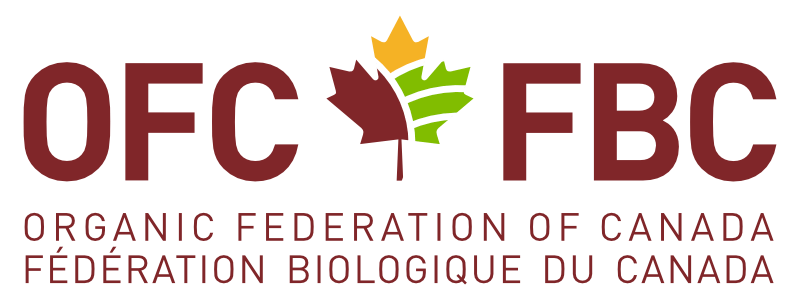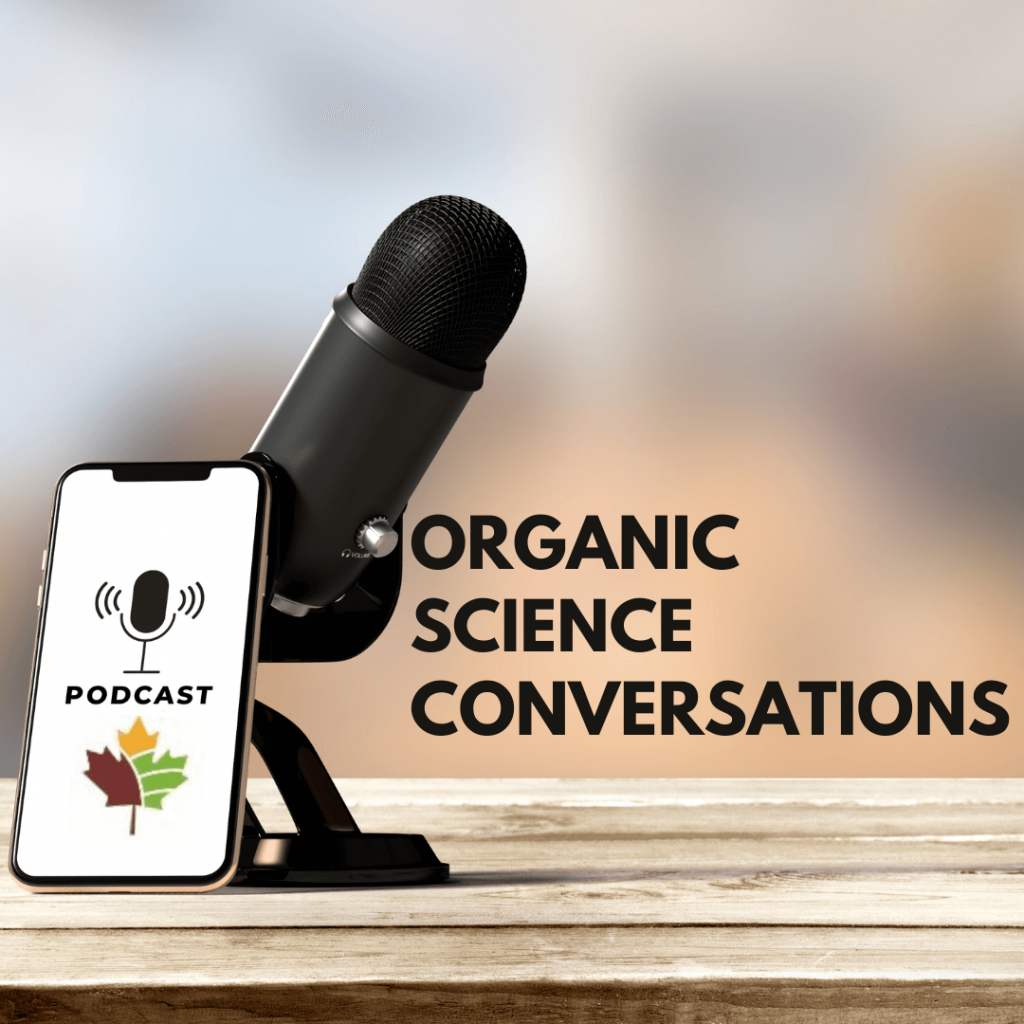Summary
Dr. Simon Lachance, a researcher at the University of Guelph, is looking for biopesticides to control greenhouse pests. He is extracting saponins from greenhouse tomato crop residues to test the antifungal and insecticidal properties of this bioactive molecule, whose phytochemical potential is under-exploited in Ontario greenhouses.
Download the English transcript in PDF format.
Good morning, we are pleased to present an interview with Dr. Simon Lachance from the University of Guelph Ridgetown Campus. He is leading the research activity of the Organic Science Cluster 3 that focuses on saponins for pest management in organic greenhouse crops.
Hello Simon!
Hello Nicole!
Simon, what is your academic background? Are you an entomologist?
I am an entomologist. I did my Bachelor’s and Master’s degrees at Laval University, and my PhD on biological control of tarnished plant bugs at the University of Guelph. Since then, I’ve been doing research at the University of Guelph with the last 4-5 years at the Ridgetown Campus. The goal is to extract biopesticides, which are compounds synthesized by plants, and then use them to control insect pests, particularly in greenhouses, because there is a large production of greenhouse vegetables in southwestern Ontario.
That brings us to the subject of your research: what are you studying? What is a saponin?
A saponin is a chemical compound produced by many plants, such as quinoa, some legumes, ginseng, spinach and many plants in the Solanaceae or nightshade family (including tomatoes, potatoes and eggplants). These are fairly large molecules and are used, for example, as soap to make a product foam, hence its name ‘saponin.’
In our work, we extract the saponin molecule from tomatoes, specifically from agricultural residues that are not used, such as tomato peels. We have an agreement with Conagra, which markets most of the tomatoes that are grown in the field in southwestern Ontario.
The other source of saponins is the leaves, stems and unused residue left at the end of the growing season in tomato greenhouses. We have an agreement with Erieview Acres, an organic tomato greenhouse. Their tomato vines are shredded at the end of the season and sent to a landfill, except for a certain amount we use to extract our saponins.
It has been known for quite a long time that saponins can be used as an antifungal agent to control certain fungi, including pathogenic [disease-causing] fungi, and certain insects, such as aphids.
Our project is to reuse crop residues and agricultural waste, add value to them, and extract saponins to control insect pests in greenhouses.
This is circular biology based on recycling; it’s viewed very positively in organic production. I read that saponin stimulates the resistance of plants so that they can defend themselves against pests. How does it work?
Part of the project is to see if the plant responds by producing more defense proteins so it’s better protected, more resistant, against insect pests. Saponin also has a repellent and toxic effect against certain insect pests. So a foliar application has a biopesticide aspect that will probably prevent insects from feeding on the leaves because of its toxic and repellent effects.
So, saponins would have an effect on tomatoes? And on other types of plants?
The main crops grown in our organic greenhouse on the Ridgetown Campus are tomatoes, cucumbers and peppers. Right now we’re doing lab tests. We’re harvesting the leaves of tomatoes, peppers and cucumbers, and doing our biopesticide tests by applying varying rates of saponins to the leaves.
I do a lot of work on the tarnished plant bug, the melon aphid and the mealybug. We put about 10 insects, depending on the tests, on the leaves in the lab and check to see what is happening. Is there mortality? Do the insects go on the leaf? Do they feed on the leaf? Is there a repellent effect or a toxic effect of the saponin? We count the number of insects on the leaves every hour for about 24 hours.
Another part of the project is being done by Dr. Ian Scott at Agriculture and Agri-Food Canada (AAFC). He’s an entomologist who’s looking at some of the same things I’m looking at but with other insects, including whitefly and greenhouse whitefly, foxglove aphid, two-spotted spider mite and berry thrips. This covers the major insect pests in the greenhouse. Another colleague, Dr. Rob Nicol, who works at Lambton College in Sarnia, is a pathologist working on fungal pathogens. We want to know if saponin can also be used as a fungicide; we apply it to the roots of plants, then to the soil where the plants grow, and we see if it can prevent certain fungi from developing, including those responsible for damping-off the seedlings.
When you apply saponin to a leaf in the presence of insects, is the effect fairly quick?
Yes, because right now we’re doing lab tests on leaves that are detached from the plants. We are conducting tests for 24 hours; if there isn’t much of an effect in the first few hours or in the first 24 hours, there probably won’t be any long-term effect. If it works well, we will do more long-term testing.
Is this the first time that saponins from plant residues have been used to control pests?
It is not completely new. Heads Up Fungicide is already registered for the control of certain fungi in potatoes, soybeans and dry beans. But this saponin does not come from crop residues; we are looking to use crop residues, particularly tomato residues, to produce them. We must also consider that the saponins of different plants will probably have slightly different properties. There are differences between the saponins of tomatoes and quinoa, so we really need to see how they each work and whether each insect will react differently to the application of saponins.
But the saponin is inside the plant tissue, it that not enough for the plant to defend itself against the insect?
No, it is not enough. Plants have evolved to produce certain defense compounds, but insect pests that feed on these plants adapt to the defense compounds. If we take tomato saponin and apply it to another crop against other insects, some of them will die or will not feed because they don’t like the taste or because the saponin has a negative effect on them. We also aim to increase the dose; if we concentrate it, the dose will be higher and maybe it will work.
When you eat a vegetable or fruit, does saponin leave a bitter taste?
This is a good question, because saponins are known to have a bitter taste; moreover, saponins are also used in medicine. Their mode of action on insects is not entirely known, but it is thought to act on insects in two ways. One is in terms of toxicity, probably by binding to cholesterol and preventing insects from moulting (so the insects will moult a little abnormally), or by causing the breakage of insect cell walls. The other is repelling the insects by making the leaves less appetizing.
So it’s not just a repellent; does saponin act on the insect’s metabolism?
Yes, absolutely, that is the mode of action at the toxic level, which is in addition to the anti-feeding effect. It reduces the insects’ appetite because it probably does not taste very good. It is bitter for us and is bitter for the insects as well.
You are entering the third year of your five-year research activity; where are you now in terms of the laboratory testing stage?
Yes, we have a lot of results on the tarnished plant bug, which is not only a pest in the greenhouse but can also be a big problem in the field. We have also done a lot of tests on the melon aphid, and we’re starting our tests on the mealybug. Not all insects respond in the same way to saponin.
You also have to look at the saponin itself. We tested the saponins extracted from the tomato peel, and the saponin extracted from the residue from the shredded vines, leaves and stems; the results are slightly different. We also did tests in greenhouses because we have to make sure that the biopesticide is not toxic to the plant. We tested various rates of saponins on cucumber, pepper, and tomato plants in greenhouses.
Do you have a colony of bugs that you are pampering?
Yes, we have three bug colonies: tarnished plant bugs, melon aphids and whiteflies. We also re-use the plants we grow in the greenhouse to feed our insect colonies. Dr. Ian Scott at AAFC also has three or four other insect colonies that he works with, and we share our data.
And your passions?
Yes, we share our passions, our data, yes, we talk every couple of weeks or so. We’re also working with Erieview Acres in Kingsville, Ontario, to collect residues from the greenhouses, and with our partner Freeman Herbs in Beamsville, Ontario. We’re testing other plants, like basil, at Freeman Herbs to see if saponin could control some of the insect pests in greenhouse herb production.
In addition to the funding from the Organic Science Cluster, you are also funded by the Ontario Greenhouse Vegetables Growers. Once your project is complete, what would be the ideal outcome–that saponin be registered and be produced industrially to support organic greenhouse production in Canada?
The registration process is still quite lengthy. It would be ideal if we have the results that can support a submission to the Pest Management Regulatory Agency (PMRA) for the registration of our product.
Would your product be mainly used in a greenhouse or in the field?
For the moment, our project is for greenhouse cultivation, but I think there is still a market that could open up for field cultivation. We are mainly targeting organic growers because the choice of biopesticides is still quite limited. There are a few available, and we would like to broaden that choice by adding saponin as a biopesticide for the control of certain insects in greenhouses.
The biopesticide industry is really growing around the world. There are more and more people working to develop biopesticides, and we are very excited about the idea of recycling residues that are normally sent to landfill sites and reusing them. We are extracting a biopesticide that gives added value, and we have the idea for another project of sending the plant residues from the saponin extraction to a biodigester. Or we could use the remaining plant material after saponin extraction to feed flies to produce protein. That way, the recycling loop would be completely closed.
Or composting?
Yes, maybe the plant material could be added to compost, but it would have to be mixed with other residues, because tomato vines don’t compost very well. We are thinking about what we can do with the residues after extraction to try to add value to all the parts of the project.
It’s interesting, we’re really looking forward to the results of your research activity. Thank you very much, Simon. We will contact you again at the end of your project, because it is a promising project.






